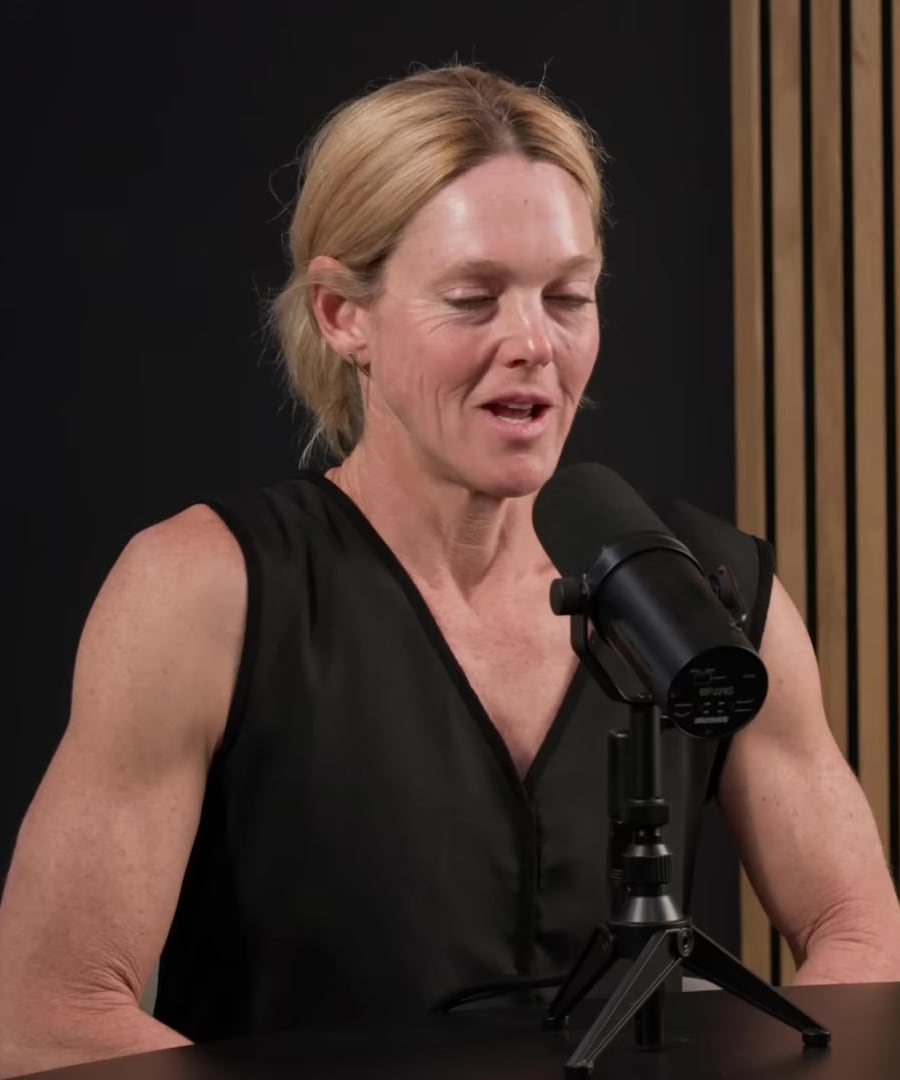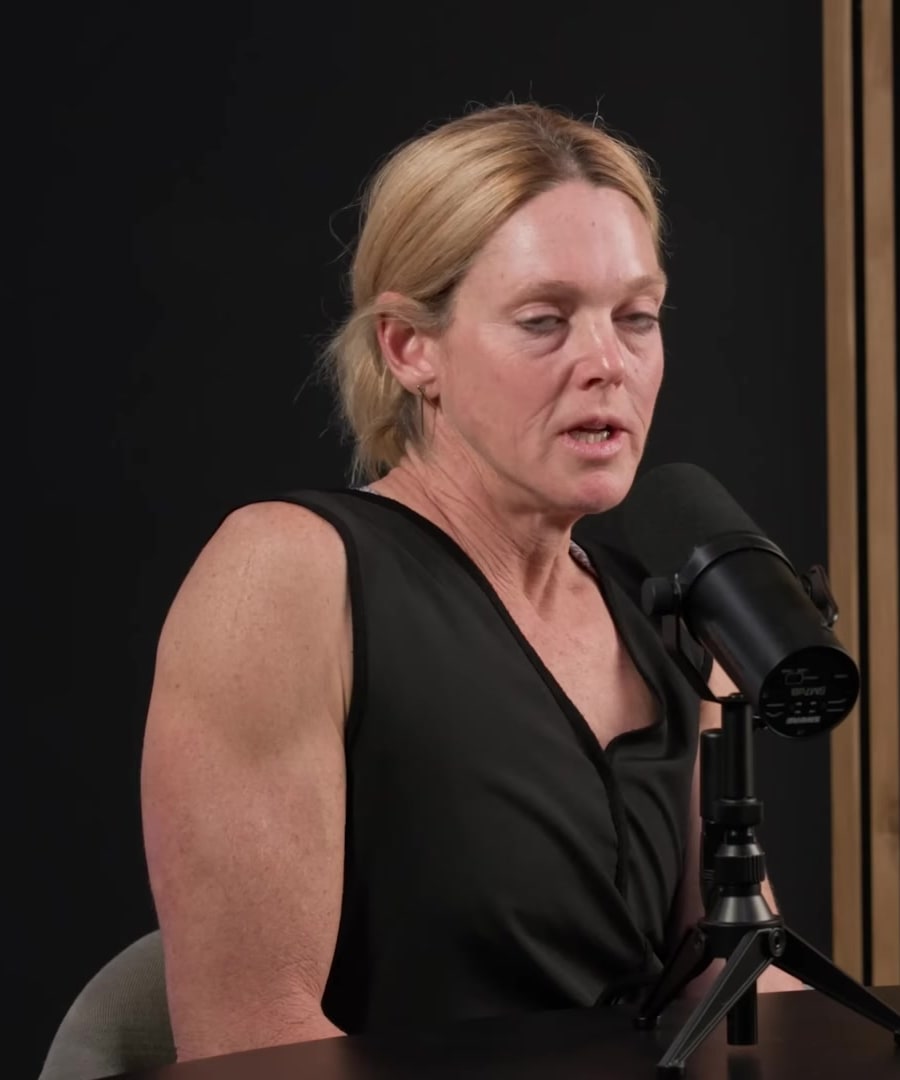Please summarize the huberman lab episode with Stacy sims
In the episode "Dr. Stacy Sims: Female-Specific Exercise & Nutrition for Health, Performance & Longevity" from the , discusses several key topics related to optimizing fitness and nutrition for women. Some primary areas of discussion include:
- Nutrition and Exercise Strategies: Emphasis on optimal nutrition, female-specific fitness insights, proper eating windows, and pre- and post-workout nutrition.
- Training Insights: Strategies for strength training, high-intensity training, cardio, and the impact of the menstrual cycle on training.
- Hormonal Considerations: Effects of hormonal fluctuations including menstrual health, birth control, and menopause on athletic performance and training.
- Cold and Heat Exposure: Benefits and specific strategies for cold and heat exposure for female athletes.
- Supplemental Guidance: Recommendations for supplements like creatine, vitamin D, and adaptogens, tailored to the needs of women.
Dr. Sims also provides insights into unique challenges women face in aging, highlights the importance of listening to one's body, and offers advice on confident and effective training strategies suitable for women at various stages of life 1.
RELATED QUESTIONSPlease expand on this with specific tips she provides
Sources:
In the , she shares numerous specific tips about optimizing exercise, nutrition, and health for women:
-
Bone Health and Menopause:
- Dr. Sims highlights the importance of jump training, heavy resistance training, and sprint interval training to prevent bone loss during menopause. She explains that such training types can help maintain bone density without relying solely on pharmaceutical interventions 1.
-
Protein Intake:
- She stresses the importance of protein for women, recommending around 1 to 1.1 grams per pound of body weight per day (approximately 2 to 2.3 grams per kilogram). Despite seeming high, this protein amount is vital for muscle building and maintaining body composition 1.
-
Training Strategies for Different Age Groups:
- For women aged 20-40, Dr. Sims recommends efficient training focusing on health, vigor, and longevity, incorporating strength workouts and high-intensity intervals to meet their physiological needs 1.
- For women over 50, she underscores the importance of maintaining proprioception, balance, bone health, and strength with intense, short-duration jump training regularly to improve bone mineral density significantly 2.
-
Menstrual Cycle Impact:
- Dr. Sims advises women to track their menstrual cycles to optimize training, noting that women typically perform better during the low hormone phase (day 1 of menstruation to ovulation) due to better stress accommodation and resilience, ideal for pushing physical limits 3.
-
Heat and Cold Exposure:
- She discusses the advantages of heat exposure post-training, possibly incorporating protocols like the "Sims protocol" for better recovery and performance 2.
-
General Training Advice:
- Dr. Sims advises against typical weight training routines (e.g., three sets of ten to twelve reps) for women aiming for muscle tone and lean mass. Instead, she suggests the 3-5 rule: three to five exercises, sets, and minutes of recovery to stimulate muscle growth and avoid bulkiness 4.
These tips offer a comprehensive approach to female-specific fitness and nutrition, aimed at enhancing overall health, longevity, and performance.
RELATED QUESTIONS-
Please provide more detail
Sources:
Dr. Stacy Sims provides detailed advice and insights for optimizing women's health through exercise and nutrition. Here are some of the specifics:
-
Pregnancy Exercise Guidelines:
- Dr. Sims recommends staying active during pregnancy, emphasizing that the body naturally restricts one’s anaerobic capacity to protect itself 1.
- She encourages maintaining fitness through resistance and cardiovascular exercises but not aiming for fitness gains 1.
- Avoid stopping exercise entirely to prevent deconditioning, which is worse than being somewhat active 1.
-
Sauna Benefits:
-
Resistance Training Across Ages:
- For women in their 20s and 30s, Dr. Sims advises focusing on learning good movement techniques and integrating resistance training 3-4 times weekly, combined with sprint intervals for added high-intensity work 3.
- For women 40 and older, it’s crucial to incorporate heavy resistance training and sprint interval training to address estrogen-related changes like increased inflammation and visceral fat 4.
-
Bone Health & Menopause:
- Jump training, heavy resistance training, and sprint intervals are particularly effective during menopause for maintaining bone density and overall body composition 5.
- Focus on higher protein intake, aiming for 1-1.1 grams per pound of body weight daily, to support muscle building and body composition 5.
-
Hormonal Cycle Considerations:
- Women should track and understand their menstrual cycles to optimize training. The low hormone phase (day 1 of menstruation to ovulation) is ideal for pushing physical limits due to better stress resilience 5.
- During the high hormone phase, focusing on maintenance rather than performance gains is often more effective 5.
-
Fun in Exercise:
- Dr. Sims advocates for finding enjoyable exercise activities to ensure long-term sustainability. If traditional methods like running are not enjoyable, explore other activities that promote movement and fitness 6.
-
Nutritional Insights:
-
Overall Health and Longevity:
- Encourage high-intensity training to induce molecular changes that enhance glucose uptake and combat age-related inflammation, promoting long-term health and longevity 4.
These detailed recommendations cover a wide spectrum of physical and nutritional strategies, providing actionable and science-backed advice for women at various stages of life to optimize their health and performance.
RELATED QUESTIONS-








